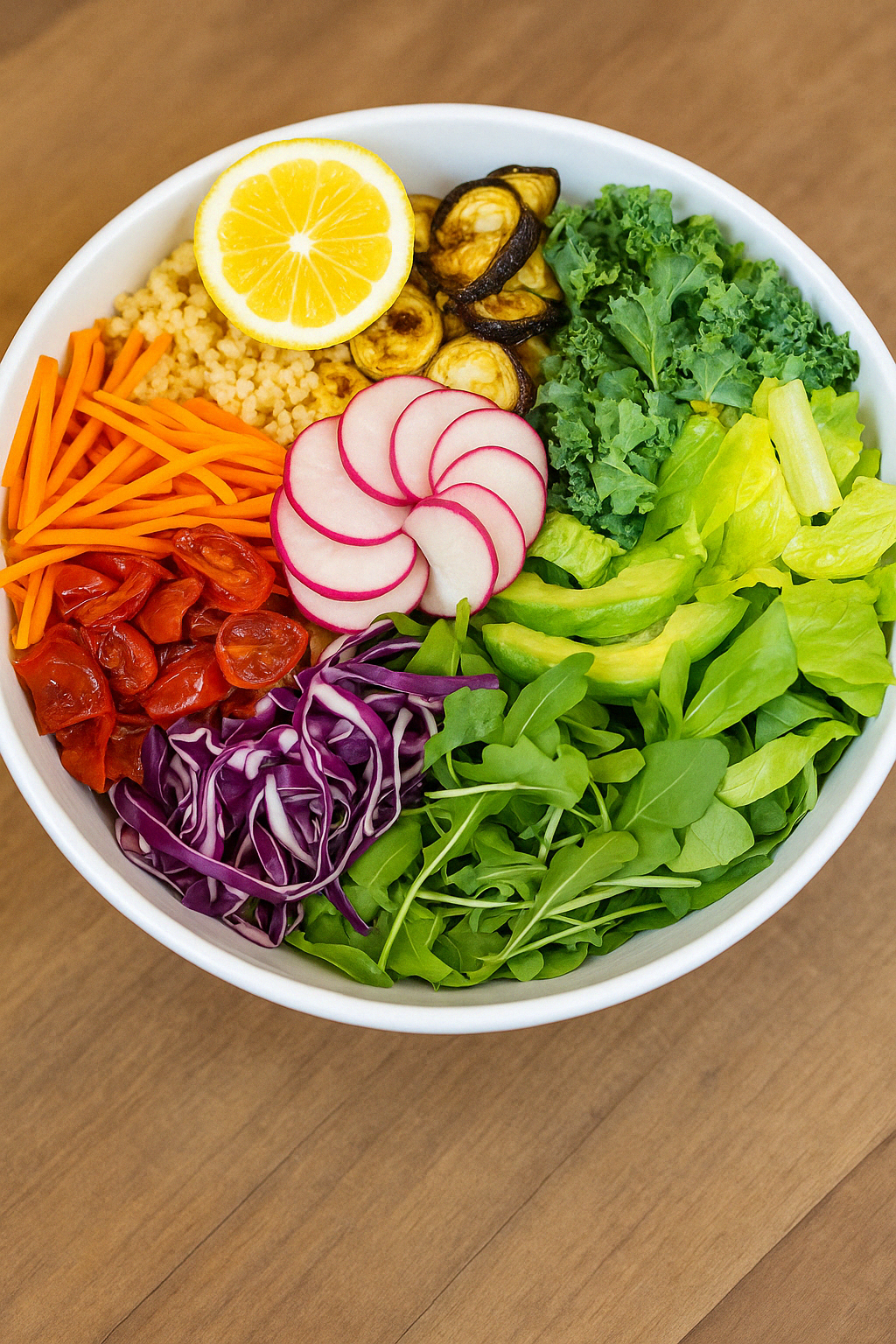Eating the Rainbow: Nourishing Your Body with Colourful Foods

“Eat the rainbow” isn’t just a catchy phrase—it’s a simple, powerful guide to boosting your health and well-being. The idea is to eat a wide variety of colourful fruits and vegetables every day. Each colour represents different phytonutrients—natural compounds found in plants that have protective and healing qualities. When we eat a spectrum of colours, we nourish our bodies with a rich diversity of vitamins, minerals, and antioxidants.
Let’s break down what those colours really mean for your body: Red foods like tomatoes, strawberries, watermelon and red capsicum are rich in lycopene and anthocyanins. These nutrients support heart health, improve skin texture and may reduce the risk of certain cancers. Lycopene is especially powerful when foods are cooked—think tomato-based sauces or soups. Orange and yellow foods—carrots, sweet potatoes, pumpkin, mangoes and citrus fruits—are packed with beta-carotene which the body converts into vitamin A. This supports eye health, boosts immunity and helps maintain healthy skin. The vitamin C found in many yellow fruits like oranges and pineapples also supports collagen production and helps the body absorb iron. Green foods like spinach, kale, broccoli and kiwi are nutritional powerhouses. They’re full of chlorophyll, folate, vitamin K and lutein, all essential for bone strength, blood clotting and eye health. Cruciferous vegetables like broccoli and Brussels sprouts also contain compounds that support liver detoxification and hormonal balance. Blue and purple foods—blueberries, eggplant, purple cabbage, and blackberries—contain anthocyanins, powerful antioxidants that support brain health, reduce inflammation, and protect against age-related decline. These deep hues are also linked to improved memory and cardiovascular health. White and brown foods such as garlic, onions, cauliflower, and mushrooms may not be vibrant in color, but they’re still packed with powerful compounds like allicin and selenium. These support immune function, reduce inflammation, and may help regulate blood sugar levels.
Eating the rainbow isn’t about achieving perfection or counting servings—it’s about creating variety. The more diverse your plate, the more likely you are to be meeting your body’s nutritional needs. Think of your plate as a canvas: aim for at least three different colours in each meal. Add spinach and red capsicum to scrambled eggs, snack on carrot sticks and hummus or toss blueberries into your porridge. Colourful eating also supports a healthy gut microbiome. Different fruits and vegetables feed different strains of beneficial bacteria in the gut. A diverse microbiome is key to strong immunity, stable mood, efficient digestion and reduced inflammation. In a world filled with quick fixes and processed convenience, returning to whole, vibrant foods is a radical act of self-care. Nature has cleverly color-coded her pharmacy—when we eat the rainbow, we reconnect with her wisdom and fuel our bodies in the way they were designed to be nourished.
So next time you’re at the market or prepping a meal, pause and ask: What colours are on my plate today? Your body will thank you for it.